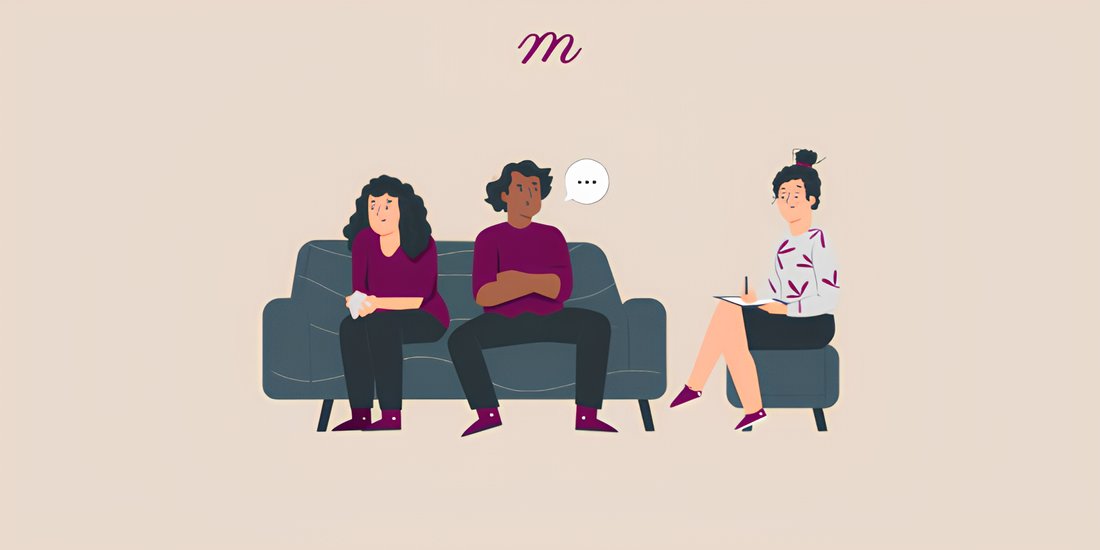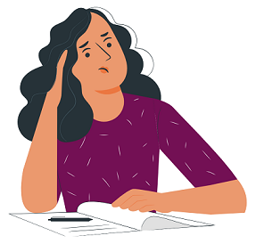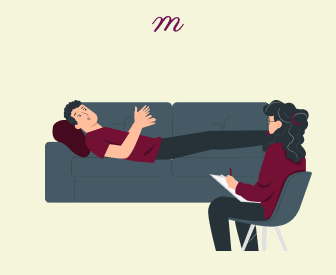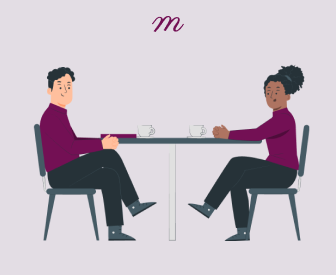Have your progress notes written for you automatically
Stigma affects individuals that need mental health support in many ways. It creates shame and makes them feel judged. This prevents clients from seeking mental health treatment. Some avoid treatment altogether. Others withhold important information that is necessary for diagnosis and treatment. Clinical communication play a vital part in shaping client’s therapy experience. The way clinicians communicate can make clients feel safe or shut out.
Thoughtful language is important as it fosters trust. Biased language creates distance. Clients are more likely to open up when they feel respected. But when they sense judgment, they withdraw. This problem has existed for decades. It continues to harm clients today. But change is possible. Modifying the way clinicians communicate can remove these barriers. A more supportive approach helps clients feel seen and understood.
Understanding Stigma and Bias in Clinical Communication
In mental healthcare, stigma is a negative label about people. It happens when others judge them by their illness or actions. Stigma affects how therapists and society treat these people.
Stigma is dangerous and can seriously affect a person’s life. It harms their mental health and lower their confidence. It may also stop them from asking for help when necessary.
There are many reasons why stigma exists in mental healthcare. Lack of knowledge, cultural beliefs, and unfair systems can cause it. Sometimes, real health challenges are seen as personal failures. Society may blame people instead of understanding their struggles.
Unlike stigma which cuts across the public and mental healthcare system, bias is primarily attributed to mental health providers. Bias happens when healthcare workers treat clients unfairly. It can affect the care clients receive. Bias can be based on race, gender, money, or people’s weight. Sometimes, it influences how mental health practitioners diagnose and treat clients. This can negatively influence the client’s mental health outcome.
Bias in mental healthcare is caused by several factors. One of the most predominant causes is implicit bias caused by social stereotypes. There is a need for mental healthcare practitioners to pay attention to the message they internalize about race, gender, and socioeconomic status of people. Otherwise, it will unconsciously affect their interaction with clients.
Strategies To Reduce Stigma and Bias In Clinical Communication
1. Training of HealthCare Providers In Cultural Competencies
Cultural competence means a therapist can help all clients equally. They must understand and respect cultural differences to give better care. Therapists should check their own biases and be sensitive to clients. This helps them communicate in a way that fits each client’s needs.
Therapists should also learn about different cultures. They can ask clients about their beliefs, traditions, and preferences. This depicts professionalism.
Mental healthcare institutions should continuously conduct training on cultural competencies for their staff. The training should teach therapists how to give fair care to all clients. This helps create a welcoming space for people of all backgrounds.
2. Using Person-Centered Language
Mental healthcare providers should use words that respect their clients. They should avoid language that puts labels on people. Instead, they should focus on person-centered language. For example, saying “client with diabetes” is better than “diabetic client.” The first one sees the person, not just the illness.
When talking to clients, it is best to be careful with sensitive topics. Always use words that are kind and fair. Ensure your choice of words is non-judgmental. Also, frame mental health counsel in a supportive manner instead of imposing it as a directive. Non-directive counseling encourages clients to engage better as you focus on their unique experiences.
3. Increase Awareness of Implicit Bias
Implicit biases happen without therapists even realizing it. But they can be reduced through self-reflection and learning. Tests called Implicit Association Tests (IAT) can help. These tests show hidden biases in healthcare workers. This can help lower stigma in mental health care.
Peer discussions and case reviews can also assist healthcare practitioners to challenge implicit bias. During conversations, healthcare professionals can talk about real-life scenarios. These scenarios can include case studies that will help them identify potential biases in clinical decision-making. The discussions should border around racial, gender, and disability biases. Constant conversations along this line foster an environment where bias is actively acknowledged and addressed.
Mental healthcare organizations should talk about implicit bias often. They can include these talks in meetings, training, and workshops. This helps staff become more aware and keep improving. It ensures that bias is reduced in client care.
4. Be Empathetic and Listen to Clients Actively
Empathy and active listening help reduce stigma and bias. Therapists should ask open-ended questions instead of yes-or-no questions. It enables therapists to build rapport with the client. This helps clients share more during sessions.
For Example:
“What would you like to talk about today?”
“How do you feel about that?”
“Tell me more about that”
Pairing the first question with assuring looks motivates clients to express their feelings confidently. Regardless of their feedback, ensure your responses are not judgmental. This would help you build trust.
While they are speaking, actively listen and give a summary when they are done. This helps them understand that you value their views and you’re with them.
5. Address Structural Stigma in Healthcare Policies
Therapists in private practices should proactively address structural stigma in their organizational policies. Their clinical guidelines must be inclusive and should not be disadvantageous to certain groups of people. It should prevent racism, sexism and other forms of discrimination. Practices can start by encouraging diversity in the workforce of the practice. This diversity will bring different perspectives and experiences into the practice which will lead to more inclusive care.
6. Destigmatize Mental Health and Chronic Conditions
Discussions about mental health and chronic conditions should be infused into regular conversations. Some of these conditions are greatly stigmatized in communities. However, practices can minimize the stigma by ensuring the choice of words are well considered.
Talking openly about mental health helps clients share without fear. Teaching them about mental health and chronic diseases also helps. It allows them to understand their health without feeling judged.
7. Implement Community Outreach and Education Programs
Mental healthcare providers should implement recurring community outreach activities in their schedule. The outreach activities should educate the public about the effects of stigma and bias in healthcare. The activities can be conducted in the format of workshops, and sensitization programs. There can be partnerships with advocacy groups to help mental healthcare providers and clients understand the importance of equitable treatment.
The Impact of Stigma and Bias in Clinical Communication
Lack of Client Trust and Engagement
If clients perceive stigma or bias during their communication with their therapist, they may withhold vital mental health information. In some cases, they could avoid seeking mental health care till the case becomes critical. As a therapist, strive to win the trust of clients. Ensure that your body language and choice of words encourage them to disclose all the details about their well-being.
Poor Health Outcomes
One of the side effects of stigma and bias is the discrepancy in mental healthcare delivery. The after-effect is that the health of affected clients deteriorates without adequate care. For instance, If a therapist thinks a client is exaggerating, they may not give proper care. This can cause prolonged pain and serious health problems.
Psychological Distress and Emotional Harm
Subjecting clients to stigma and bias could make them feel embarrassed and frustrated. When such cycles of embarrassment and frustration are repeated, they will begin to internalize the stigma. This could lead to further harm which will worsen existing mental health conditions.
Non-Adherence To Treatment Plans
Clients who feel stigmatized will struggle with sticking to their clinician’s counsel and treatment plans. Once they notice the mental health practitioner judges them, they are most likely to stop adhering to prescriptions and lifestyle recommendations. Unfortunately, this will also worsen their health conditions.
Burnout Among Healthcare Providers
Stigma and bias do not only harm clients; they hurt providers too. Therapists in unfair workplaces may feel stressed and unhappy with their jobs. Some clinicians may also project these issues to their clients. If these providers feel powerless to fight it, they could get stressed and stay discouraged. As an aftermath, their effectiveness in rendering care to clients will be affected.
Conclusion
Stigma and bias in clinical communication should not be tolerated in the mental healthcare industry. They affect client trust, and mental health outcomes. Combating stigma and bias requires practices to employ different approaches that work. More awareness can help reduce stigma. These methods include educating the public, creating safe spaces for people dealing with mental health challenges. It ensures every client gets proper care.
Frequently Asked Questions
What Is Stigma In Clinical Communication?
Clinical communication stigma means unfair treatment of certain clients. It can be due to their health, race, or personal traits. It often shows through judgmental words or poor care.
How Does Bias Affect Clinical Communication?
Bias affects clinical communication by influencing how clinicians treat clients. It can lead to misdiagnosis, unfair care, and discrimination in treatments.
Why Are Stigma And Bias Dominant In The Healthcare Sector?
Stigma and bias in healthcare come from stereotypes. Cultural diversities and social conditioning sometimes make it worse. While some mental health practitioners may show bias without realizing it.
What Is The Role of Nonverbal Communication In Stigma And Bias?
Stigma is not necessarily vocal and should be avoided. Clients notice body language, tone of voice, and facial expressions. Nonverbal cues can spread stigma or bias, even without words.
Are Healthcare Institutions Doing Anything To Combat Stigma And Bias?
Yes. Some mental health practices have diversity, equity, and inclusion policies and programs. They also offer implicit bias training and create policies that promote fair treatment of all clients.










